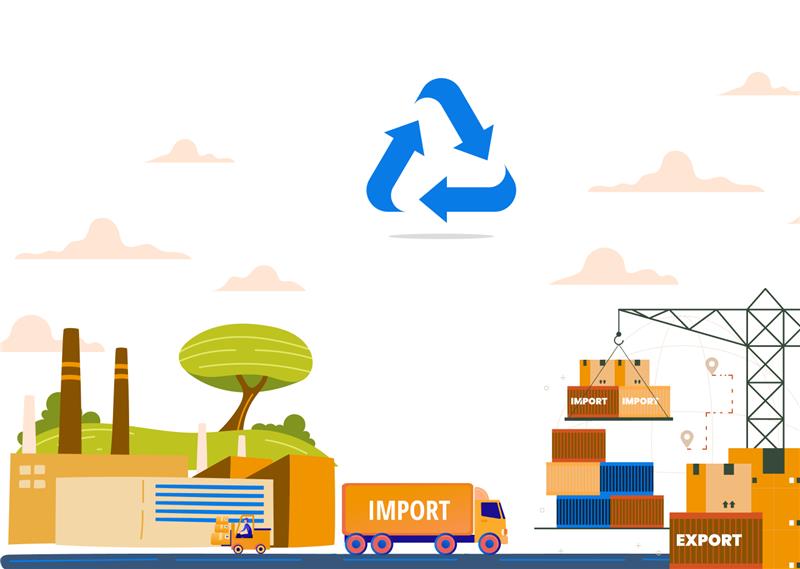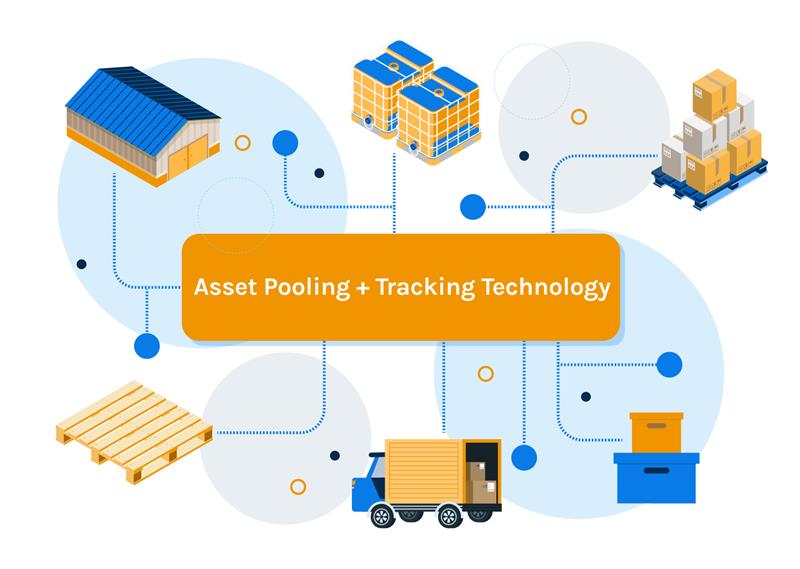Sustainability has become a defining force in global supply chains. Companies across industries are under pressure to reduce waste, lower their carbon footprint, and prove progress toward environmental goals.
From packaging bans to ESG commitments, the message is consistent: single-use materials are being phased out, and businesses must adopt long-term, circular alternatives. This shift has accelerated demand for returnable transport packaging or returnable assets that can be reused across multiple logistics cycles.
Returnable packaging is no longer seen as disposable material but as part of a company’s core infrastructure. Plastic pallets, bins, roll cages, specialized carriers like insulated boxes, totes and others, when managed effectively, help reduce landfill waste, cut resource costs, and align operations with sustainability targets.
For many businesses, investing in returnable asset management solutions has become a way to meet ESG expectations while building more resilient supply chains. Reusables also fit into broader industry frameworks, supporting goals around emissions reduction, material efficiency, and circularity.
Importantly, this shift is not limited to the largest global corporations. While multinational players may have long adopted sustainability programs, smaller and mid-sized businesses are now facing the same pressure from customers, regulators, and industry partners.
Whether it’s a regional food distributor, a manufacturer, or an asset pooling company, the expectation to move away from single-use packaging applies to all. Sustainability has made asset tracking solutions and visibility into returnable assets, a baseline requirement rather than just an aspiration.
But this transition has its own challenges. Returnable assets are more costly to procure than their single-use counterparts, and their financial value depends entirely on how well they are managed. Assets need to circulate efficiently, return on time, and remain in usable condition.
Loss, damage, or idle stock can quickly undermine the case for reuse. The global momentum toward greener operations is clear, but without effective returnable asset management, businesses risk turning sustainability into a source of additional cost instead of competitive advantage.
The Challenge in Managing Returnable Assets Are Tremendous
While returnable transport packaging creates a clear sustainability benefit, it introduces operational complexities that many businesses underestimate.
Unlike one-time packaging that leaves the system after use, returnable assets must remain in constant circulation. Their financial and environmental value depends entirely on efficient reuse; and that requires discipline at every stage of the supply chain.
Mismanagement is the most common challenge. According to a Deloitte study cited by DHL (link), pallet and lid loss rates in some industries can reach 15–20%, with visibility gaps and inefficient returns compounding the problem.
Assets are also frequently returned late or left idle, creating shortages and bottlenecks in daily operations. For industries like food or chemicals, poor cleaning and maintenance further erode asset value, sometimes making them unusable and undermining compliance goals.
The scale of this issue is well recognized. The Reusable Packaging Association’s 2023 white paper highlights that reusable assets such as pallets, bins, and containers are now considered critical infrastructure in supply chains.
Their value, however, depends on continuous monitoring of location, condition, and availability, without which businesses face higher costs and greater sustainability risks.
The problem is magnified for mid-sized businesses. A company operating 5,000 to 10,000 pallets or roll cages may not have the scale to absorb high loss rates or extended idle times.
Yet manual processes – spreadsheets, paper logs, or ad-hoc checks – leave them vulnerable to these inefficiencies. Without visibility, returnable asset management becomes reactive rather than proactive, with businesses constantly responding to shortages, replacements, and customer complaints.
This gap between intent and execution is where technology should help. Good asset tracking solutions can close the loop, giving businesses real-time insight into where their assets are, how they’re being used, and when they need to return.
But here again, most existing platforms are designed for large enterprises with global networks, leaving smaller operators with limited and inefficient options.
Why Current Asset Tracking Solutions Don’t Fit Mid-Sized Businesses
The promise of asset tracking solutions is straightforward: real-time visibility, better utilization of returnable transport packaging, and fewer losses. They often promise monitoring beyond just location or route tracking, and that’s essential.
For global enterprises managing hundreds of thousands of pallets or containers, these platforms deliver value by reducing waste and ensuring compliance. But for businesses operating on a smaller scale, the reality looks very different.
Most available systems are built for the top end of the market. They bundle proprietary hardware with expensive monthly subscriptions for analytics, creating a steep entry barrier. On top of this, system integrations, regional connectivity, and separate telco contracts add layers of cost and complexity.
What is marketed as end-to-end returnable asset management often ends up being a patchwork of separate services and invoices – a structure that is simply not efficient for mid-sized logistics operations.
The economics don’t align.
A company with 5,000 to 10,000 or lower fleet of returnable assets faces the same sustainability pressures as larger players, but the cost per unit of adopting enterprise-grade systems is disproportionately high.
While technology adoption in reusable packaging is accelerating, it often assumes large-scale deployment to achieve ROI. Smaller businesses are left in the gap: too big to rely on spreadsheets, but too small to justify six-figure technology investments.
As a result, many businesses either under-invest in visibility or continue to rely on manual methods that don’t scale.
The outcome is predictable: higher loss rates, inefficient cycles, and growing frustration as sustainability targets clash with economic realities.
What’s missing in the market is a model of returnable asset management that aligns with the needs and budgets of mid-sized players – affordable, integrated, and scalable without unnecessary overhead.
What Businesses Really Need
Mid-sized companies cannot adopt the same systems that global corporations use. The budgets, scale, and dedicated teams required for those platforms are out of reach. To make returnable transport packaging workable, businesses need solutions built for their reality.
First is integration. Asset tracking solutions need to connect seamlessly with the systems businesses already use – whether that’s ERP, WMS, or transport management platforms. Without integration, asset data sits in isolation and companies struggle to translate visibility into action.
Second, instead of the separate contracts for hardware, analytics, connectivity, and including multiple telecom operators, companies need asset tracking solutions that deliver everything in a single service. Simplifying the model reduces overhead and ensures visibility without added complexity.
Third, costs must also align with the fleet size. A business managing 5,000 to 10,000 returnable assets cannot justify enterprise-level pricing and high upfront costs. Scalable, usage-based models allow sustainability to become a source of efficiency rather than expense.
Finally, visibility has to be practical. Returnable asset management should provide clear data on circulation, condition, and returns – not just for reporting, but to prevent losses and disruptions. Predictive insights that flag delays or misuse help businesses act early and keep operations on track.
Sustainability has made returnable assets essential. The next step is ensuring they can be managed in a way that is affordable, integrated, and effective for every business size.
Closing Thought
Sustainability has made returnable assets essential, but managing them well is what turns intention into impact. For mid-sized businesses, that balance has often felt out of reach, caught between costly enterprise systems and inefficient manual methods.
The future lies in making visibility as accessible as the assets themselves.
That’s the idea behind SensaTrak: a way to manage your returnable assets with simplicity, scale, and sustainability built in.
Because in the end, sustainability isn’t just about adopting reusable packaging, but also about every asset being in continuous motion and adding value for the business as well.

